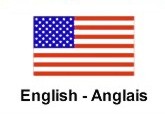Program explains Morganville-Feves connection
by Heather Dreith
�In 1948, Morganville played a role in assisting post-war France recover from the shock and disillusionment,� KU
professor John Sweets told a crowd of about 30 people at the Clay County Museum last Thursday evening.
Sweets, in a presentation sponsored by the Kansas Humanities Council, explained that the French Government, by
collaborating with their German occupiers, exposed the French people to much suffering. Some were deported to Germany
to work in factories. Those staying home existed on a starvation diet as any food produced went to Germany.
The French resistance movement, according to Sweets, built bright hopes for the future, but the Americans and British
liberated France at a high cost in French lives and destroyed the country�s infrastructure.
After the war, there was a labor shortage in factories and on farms and transportation was severely crippled. That is
why many communities like Morganville �adopted� towns of similar size in France or elsewhere in war ravaged Europe.
Morganville, through Operation Democracy�s �Adopt a town� program, adopted Feves, a rural town in the north of France.
Morganville was the smallest town in the United States to participate in this program.
The story of the two towns was told Thursday evening in a slide show created by Cathy Haney and funded by a grant from
the Kansas Humanities Council.
Before the war, the population of Feves was 325. The village was 75% destroyed in the war by American bombers.
Morganville chose Feves to try to help heal the wound caused by the war.
The people of Feves needed bedding, shelter, milk for the children, and warm clothes. Within three weeks of selecting
Feves as a sister city, the citizens of Morganville put on a fund-raising historical pageant, the �One World Peace
Festival,� to buy and ship to Feves as many of these items as quickly as possible.
The pageant was featured in many of the slides shown Thursday evening, and Morganville residents in the audience
enjoyed identifying the people involved. The pageant and other associated fund-raisers held that day attracted an
estimated 3,000 people from all over northeastern Kansas and raised $1,000 for the Feves project. Powdered milk,
clothing, fat, lard, sugar, rice, cereal, garden seed and candy were sent to Feves shortly thereafter.
Even such a simple thing as pencils �caused joy for the children,� the mayor of Feves said at the time.
Over the next two years, more fund-raisers were held and more shipments made. Letters crossed back and forth and some
citizens of Morganville visited Feves.
A Kansas Wheat harvest scene painted by former Morganville resident and KU art professor Arvid Jacobson was sent to
Feves. In return, the people of Feves sent a woodcarving of an elderly couple sitting at their kitchen table by the
fire.
This wood carving, normally decorating a wall in the Morganville Caf�, was on display at the museum, as were several
pictures and news clippings of the period. The Morganville-Feves connection was featured on a national NBC radio
program in the early 1950s.
In the early 1960s, the connection between the two towns faded. Not long ago, a group of Morganville school children
visiting the Clay County Museum were told about the program by curator Cathy Haney. The children expressed an
interest in reviving the connection, so contact has been recently re-established.
The slide-tape program viewed Thursday night and a tape of the national radio broadcast are available at the museum.
22 November 1994
Clay Center Dispatch

